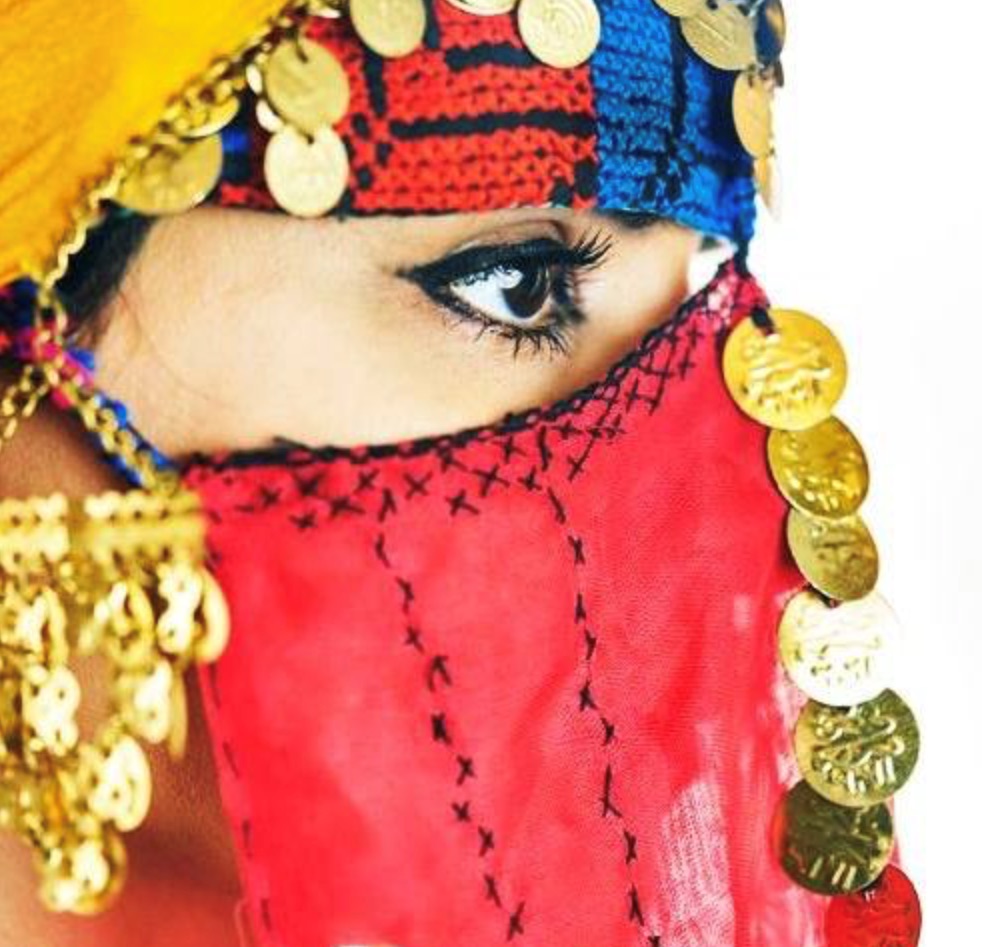Anna Knox takes Arwa Alneami’s show as a springboard to reflect on life in Saudi.
I lived in Saudi Arabia for four years. When I walked into Never Never Land I felt I was being welcomed back. For me, Alneami’s images of people at a theme park in Abha instantly evoke the energy and contradictions of Saudi society. Bright lights, colour, black, bling, night, heat, oneness, individuality, silence, rage, and laughter all surface immediately along with a familiar, entangled sense of entrapment and freedom.
The photo I was most drawn to shows a teenager on a quad bike, her abaya bunched up and her legs—in jeans and sneakers—gripping the bike’s sides. She is in control, aggressive, focused; not bothered by her clothing. Many of the Saudi women I met could be described this way. But she is also riding in circles—an apt metaphor for the redundancy the images reference.
I was thrilled by the exhibition because I find it difficult to describe what living in Saudi was like; Alneami’s works readily convey the disruptive reality of a land most New Zealanders will never (never) go. But I do wonder what others see when standing in front of Alneami’s ‘Bumper Cars’? Without having experienced the physical logic of Saudi, what does the video conjure? Without having met a Saudi woman, where does one’s mind go?
The narratives accumulated in the West about Saudi and Islam can quickly overwhelm Alneami’s work, veiling what she offers. I am conscious of this because of my own experience. The women I met in Saudi defied my prejudices, representing their histories, struggles, and searches for identity in their own ways. All undermined the meta-narrative of repression assigned to them by the West. When I left Saudi I desperately wanted to see these stories come alive in the global imagination. In telling a handful of them, the work of Alneami and her contemporaries is revolutionary, not for Saudi, but for the way the West sees it.
Never Never Land commemorates Suffrage 125. What many people looking at Alneami’s work won’t realise is that when women gained the vote in New Zealand, Saudi Arabia did not exist. The country was created in 1932 after the northern Al Sauds finally conquered the many feuding tribes of the diverse regions of what is now Saudi Arabia. It was in Rojal (Rijal Alma), the village in Asir which Alneami is originally from, that the significance of this started to open out for me.
I visited Asir in 2010 with a group from KAUST, the university where I was working. Our guide described himself as ‘doing battles’ to keep the histories of Saudi Arabia alive. On the bus to the hotel in Abha he fanned his arm out over the city, a palette of recent pastel houses: ‘Rolled with bulldozer, all everything,’ he said. ‘And now this. Concrete. More concrete… Yes, everyone, 1970, want toilet, water, TV, electricity. Okay, fair enough. But why not build new city somewhere else?’ The disappeared homes in the region would have been full of Al Khat, traditional paintings covering the inside walls. The masters of this culturally central art were all women.
The chief of Rojal’s wife still paints and sells Al Khat. Her family and tribe have put everything into restoring and preserving their village which dates back to 550 Hegira (1160AD) as a significant trade, scientific, and academic hub. Rojal is an impressive feat of architecture. Facing down a magnificent valley, large structures with multiple floors are carved into the steep hillside, their walls sloping inward as they rise, for stability.
The chief welcomed us to Rojal by explaining that ‘fifty years ago, no woman covered her face in this region’, and that until recently men and women intermingled freely in their society. Everywhere I travelled in the region, I heard similar stories of alternative cultural identities to the one represented as ‘Saudi’. Together, they told of the quiet fight to preserve what is being lost and over-written. In a video accompanying Alneami’s exhibition, the artist Sarah Al Abdali alludes to this when she comments on the sadness she feels walking through the disappearing historical parts of her city. ‘Each house has its own story,’ she says. ‘And it’s so sad, no-one cares about this.’
In Alneami’s images, the black background of night—when most of Saudi social life takes place—is punched through with the neon lights and bright paints of carnival rides, signs, and sideshows. But a New Zealand audience will likely focus on the foreground of burkhas and what they symbolise to us. On Alneami’s website there is a photo of the artist, wearing neither western dress nor a burkha, but a niqab of gold, red, and blue, bedecked with gold circles and chains. What many people don’t know is that the black body-and-face cover—now so fused with an understanding of Saudi—was part of the unification process. A country-wide dress-code for men and women buried local identities, replacing them with a national one. Consequently, regional and tribal dress have disappeared almost entirely in representations of Saudi. In Alneami’s region, there are several powers at work in over-writing histories—including fundamentalism, modernisation, and nationalist frameworks. Against this background, her work becomes more nuanced and localised, and its narratives more interesting than an imagined endeavour to throw off the burkha and embrace Western freedom.
The final image in the exhibition (if we read right through left, as in Arabic) shows two women in a monorail car riding above the theme park. Their backs are to us and it looks like they’re leaving the park, heading out into the blur of night. There’s a sense of opening up, and an invitation to the viewer to follow. In reality, the car will loop around endlessly, but the possibility it won’t still beckons.
—Anna Knox
Anna Knox is a Wellington-based writer, who produces fiction, non-fiction, and travel pieces. annaknox.com


